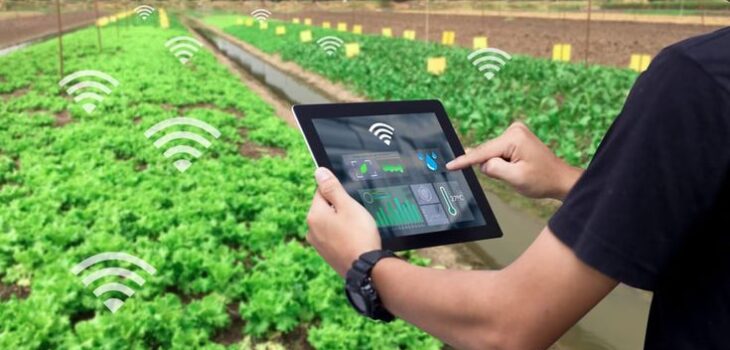 Technology
Technology
Agri-Essentials at Your Fingertips: Experience Seamless Online Farming Solutions
- by Rahuldoshi
The transformation of agriculture through digital innovation is no longer a vision of the future—it’s a thriving reality. As rural connectivity improves and smartphone adoption increases, farmers across India are discovering a more intuitive, data-driven approach to managing their fields. Traditional methods are being complemented, and in many cases replaced, by intelligent online platforms that enable smarter decision-making, direct access to government benefits, and streamlined procurement of agricultural inputs.
The Agribegri app is a prime example of this evolution, offering a centralized digital ecosystem where farmers can procure agricultural essentials, explore guidance on best practices, and receive timely updates. This democratization of knowledge and resources is helping level the playing field for small and marginal farmers, particularly in areas previously underserved by conventional supply chains.
Digital Access to Schemes Like PM Kisan Yojana
Government schemes are often marred by bureaucracy and inaccessibility, but farming apps are changing that narrative. With user-centric interfaces and vernacular support, platforms such as Khedut app and other farming app alternatives have simplified the process of applying for, tracking, and receiving financial assistance.
Under PM Kisan Yojana, over 11 crore farmers now receive ₹6,000 annually in three direct installments. What used to require multiple visits to government offices can now be managed via a smartphone. Farmers can verify eligibility, update Aadhaar-linked records, and even resolve discrepancies—all from their mobile screens.
- Farming apps also provide guidance on documentation requirements and submission timelines.
- Push notifications alert farmers to upcoming installments or changes in eligibility criteria.
These digital touchpoints bridge the gap between rural communities and critical government initiatives, empowering farmers to be proactive stakeholders in their agricultural development.
Innovative Agri Inputs for the Modern Farm
Beyond accessing schemes, online platforms provide a curated range of high-value agri-inputs that blend innovation with sustainability. The modern farmer is no longer reliant solely on local suppliers or generic inputs. Precision, efficiency, and sustainability now define the new agricultural toolkit.
1. Mycorrhizal Bio Inoculants
Mycorrhizae are symbiotic fungi that colonize plant roots, enhancing nutrient uptake—particularly phosphorus—and increasing plant resilience to drought and pathogens.
Composition: Contains spores of arbuscular mycorrhizal fungi, often blended with organic carriers.
Use Case: Applicable in horticultural crops, pulses, cereals, and plantation crops.
Benefits: Improves root development, enhances soil structure, and promotes nutrient cycling.
Considerations: Requires correct dosage and soil moisture conditions for optimal colonization.
2. Water-Soluble Micronutrient Blends
These micronutrient cocktails include essential elements such as zinc, boron, molybdenum, and manganese in chelated, water-soluble forms for foliar application.
Purpose: Addresses hidden hunger in plants—micronutrient deficiencies not immediately visible.
Application: Diluted in water and sprayed during critical growth stages.
Advantages: Enhances photosynthetic efficiency, boosts flowering and fruiting.
Limitations: Overuse may lead to nutrient antagonism or leaf scorching.
3. Humic Acid Granules
Extracted from leonardite (a form of oxidized lignite), humic acids are natural biostimulants that improve soil fertility and crop productivity.
Where to Use: Suitable for all crops, particularly beneficial in sandy or degraded soils.
How It Works: Stimulates microbial activity, enhances cation exchange capacity, and buffers soil pH.
Benefits: Promotes root elongation, improves nutrient uptake, and enhances soil moisture retention.
Caution: Should not be mixed with acidic fertilizers during application.
4. Nano Urea Liquid
A revolutionary product developed using nanotechnology, nano urea delivers nitrogen in ultra-small particles for enhanced plant absorption.
Made Using: Urea particles synthesized at the nano-scale, ensuring rapid plant assimilation.
Method of Use: Applied as a foliar spray; one 500 ml bottle replaces a full bag of conventional urea.
Benefits: Reduces nitrogen loss by over 80%, minimizes environmental impact.
Drawbacks: Needs precise timing and dosage; not a full replacement for all nitrogen sources.
“Digitization in agriculture is not just about apps and access—it’s about transforming the decision-making paradigm for farmers.”
Empowering Farmers through Khedut Apps
The surge in Khedut app usage across agrarian states such as Gujarat, Punjab, and Madhya Pradesh demonstrates the value of hyper-localized, user-friendly digital tools. These apps are no longer just informational—they’re operational. Farmers use them to:
- Get real-time mandi price comparisons.
- Receive crop-stage-specific advisories.
- Identify pest outbreaks through AI-powered image recognition.
- Hire implements such as seed drills and laser land levelers on a pay-per-use model.
For instance, a farmer cultivating soybeans in Madhya Pradesh can input their crop variety and receive tailored recommendations for nutrient management, spacing, and harvest readiness—all contextual to local weather and soil conditions.
According to a recent agri-tech report, mobile-first tools have helped reduce operational costs for smallholders by up to 18% annually, while improving yield consistency and market access.
Language, Literacy, and Livelihood: Localizing Knowledge
One of the most underappreciated aspects of digital farming solutions is their linguistic inclusivity. Farmers from non-Hindi and non-English-speaking regions can now interact with apps that support languages like Marathi, Kannada, Bengali, and Odia—making agri-advice truly accessible.
In tribal regions of Jharkhand and Chhattisgarh, voice-enabled apps are helping illiterate farmers navigate schemes, check weather updates, and access seeds or bio-fertilizers through simple spoken commands.
This cultural and linguistic integration makes technology a partner, not a barrier. More than 65% of rural smartphone users now access agri-content in their native language, signaling a shift toward a more intuitive digital ecosystem.
The Digital Pulse of Indian Agriculture
What’s emerging now is not just smart farming—it’s connected farming. Imagine a cotton grower in Telangana who:
- Orders high-yield seeds from a trusted vendor through a farming app.
- Monitors rainfall predictions to plan sowing.
- Applies nano urea using automated dosage calculators.
- Verifies their PM Kisan Yojana payment status within seconds.
- Uses AI for early pest detection and prevention.
This isn’t hypothetical. It’s already happening.
As we look ahead, technologies like IoT sensors for real-time soil analytics, blockchain for produce traceability, and machine-learning models for yield forecasting are set to become the norm rather than the exception. This is the future we’re sowing today—resilient, inclusive, and data-empowered.
Learn more about: The Future of Fitness Advertising: 7 Emerging Trends You Can’t Ignore









